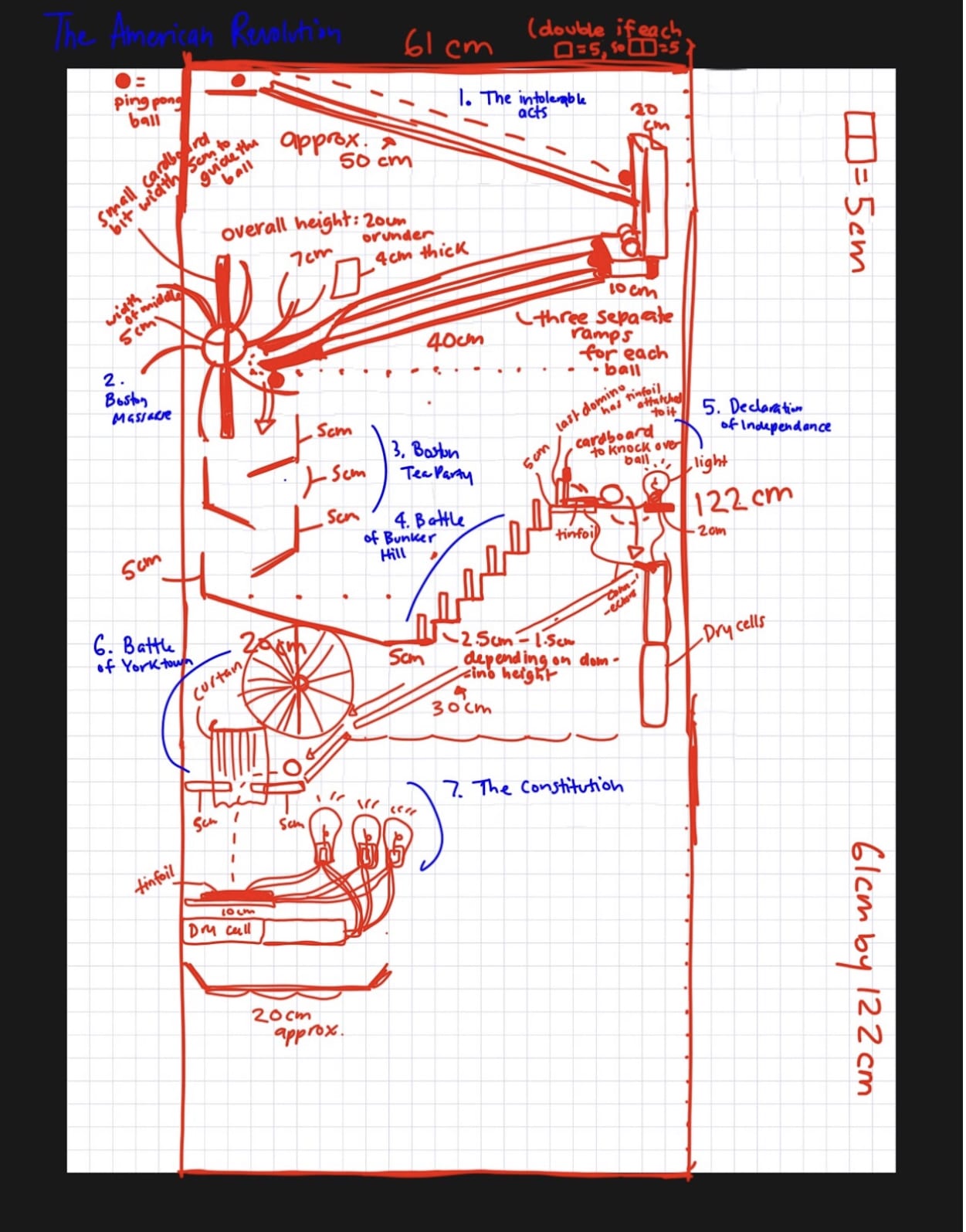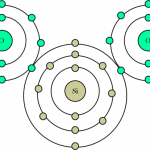Hello everyone and welcome back to my blog!
Our last unit was a big one so take a seat and buckle up as I walk you through it!
This unit was called metaphor machines. During this unit, there was one driving question: how do ideas drive change? The course covered two of our subjects, humanities and science. The main task for this unit was to create a Rube Goldberg machine. A Rube Goldberg machine is a sequence which sets off lots of chain reaction to create something.
Here’s a fun video which gives you an idea of a Rube Goldberg machine.
That machine obviously took a lot of time, effort and perseverance. I wouldn’t want to set that up every time it failed. Quick disclaimer: our machine, although based off that, is not even close to as complicated or long as their machine.
Here’s the catch: each machine had to have a theme. The themes? Historical revolutions.
In class, we got a brief overview of six revolutions. We also took brief notes on each revolution. For example:
After taking notes and getting somewhat of an understanding of each revolution, we got to choose which revolution we wanted to research. There was a google doc where we submitted our top 3 choices. Ms. Maxwell took the input from that and formed our groups.
My three choices were
1. American Revolution
2. French Revolution
3. Haitian Revolution
It turns out that I was put in a group with Lucy, Kyle and Amelia B. We got the American Revolution.
It was right about here where we were introduced to Crane Brinton’s theory of revolutions. Apparently (we didn’t know at the time) every revolution followed his theory. I took some notes to really capture the four stages.
To quickly summarize:
Stage one (incubation):
Lots of people start to disagree. An economic crisis may start. There are weak rulers in place.
Stage 2 (moderate):
Basically what the picture says. Government getting shamed in newspapers, small riots, etc.
Stage 3 (crisis):
Bad stuff starts happening. Civil wars, more violence, political assassinations, etc.
Stage 4 (recovery):
The violence and terrror ends. A new government is put into place with changes.
To fully understand this, our group researched key events in the American Revolution and tried to see what stage they fell under. For example, the Boston Tea Party (which was a large point in the AR) falls directly into the Incubation stage of Crane Brinton’s theory.
Another catch was introduced to us then. When we created our Rube Goldberg machine, each sequence of our machine had to be a metaphor for a essential event of our revolution. This really played a crucial role for us because instead of just free-wheeling it and putting random parts on our machine, we really had to think about how it would be a metaphor for the American Revolution.
Before actually making the circuit, we had to make blueprints of what it would look like. Our entire machine had to fit on a large board of wood about the size of 2 desks. This was pretty overwhelming because I didn’t have too many ideas right off the bat. Luckily, Lucy and Amelia had lots of ideas and I took inspiration from them to make some ideas my self. First, we just made ideas of what it would look like and then secondly, a scale diagram of what it’d look like. Here’s what ours looked like.
This was the scale diagram for our machine.
It also had to follow a certain style or aesthetic. It was here we learned about Steampunk. Steampunk is a science fiction genre that has evolved into a aesthetic and just so much more in today’s world. To check out more about Steampunk, you can read my blog post.
During the course of this, we did a book study on a book called Leviathan. It was written by Scott Westerfeld. This book really helped us get a good idea of what steampunk was. Also, it was a really fun read. I won’t spoil too much of it, but click the link to read it.
Scimathics also played a big role in our project. You had to have at least one functioning circuit in your machine. We learned in science class how to make those. It was interesting to learn about the different ways a circuit can be put together. In our machine, both circuits worked properly. We also learned how to join wire together by soldering them.
To cap off the entire process of making the circuits and the machine, we had to make a video. The video was supposed to include stuff like Crane Brinton’s theory of revolution, and also a full run-through of our machine. I thought that making our machine was simple enough, but making the video was a bit of a struggle. For one, Kyle and I had to redo our voiceovers about 4 times. When we finally all put it together, I thought it was pretty good. Our machine ran smoothly.
However, this was just a first draft. We got some feedback from the rest of the class on how we could improve it. One point nearly everybody made is that the music didn’t really fit the theme of the video. For example, talking about death with upbeat music in the background isn’t really a great idea. Also, a couple voiceovers needed to be redone.
I picked out new music and then we redid the voiceovers, but then when we tried to add it in, IMovie crashed. It made us lose all our progress and so we discontinued our second draft. However, we knew what was wrong with our first one.
To conclude, this unit was a big one. Lots of time and effort went into making the machines and learning about our revolution. We learned a lot of new things in order to get a full understanding of the project. But, looking back on it, creating our machine was a really fun and interesting way to look at the American Revolution. It was completely different to just making a poster board about what happened during the Revolution.
If you’re interested, here’s a final run-through of our machine. Hope you enjoy!
Anyways, this is going to wrap up this unit. I hope you enjoyed our journey through the metaphor machines.
Catch you later,
Nik













